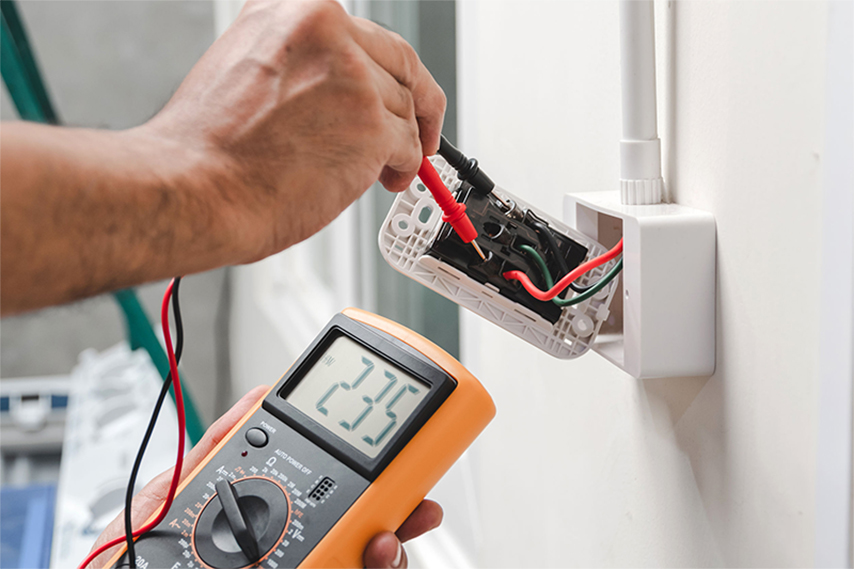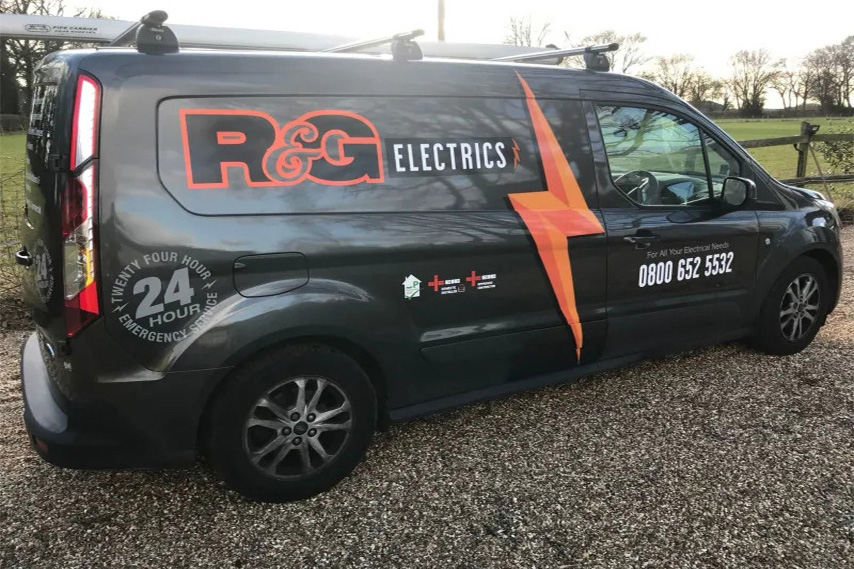We believe ‘pat testing’ or ‘portable appliance testing’ is an important part of any health & safety policy. Electricity can kill! Each year about 1000 accidents at work involving electric shock or burns are reported to the Health and Safety Executive. About 15 of these are fatal. Those using electricity may not be the only ones at risk: poor electrical installations and faulty electrical appliances can lead to fires which may cause death of injury to others. Most workplaces and types of work in this country have or use electricity in one way or another. It is our aim here at R&G to make it simple and cost effective for all types of businesses to comply with Health & Safety regulations regarding portable appliance testing and to promote a safe working environment. We look to provide a service that takes care of this important safety aspect for businesses and organisations, leaving them free and piece of mind to concentrate on running their specialist area’s of business. The Health & Safety Executive states that 25% of all reportable electric accidents involve portable appliances. The Electricity at Work Regulations place a legal responsibility on employers, employees and self employed persons to comply with the provisions of the regulations and take reasonably practicable steps to ensure that no danger results from the use of such equipment. This in effect requires the implementation of a systematic and regular program or maintenance, inspection and testing.
PAT TESTING
Portable Appliance Testing – (PAT TESTING)
Renovate has proven results for setting exceptional standards in cost control, planning, scheduling and project safety. We have experience that gives us a competitive advantage over others in our field.
The Health & Safety at Work Act (1974) places such an obligation in the following circumstances:
- Where the portable appliances are used by employees.
- Where the public may use appliances in establishments such as hospitals, schools, hotels, shops etc.
- Where portable appliances are supplied or hired.
- Where portable appliances are repaired or serviced.
Our company website has been designed to provide you with an easy guide to Portable Appliance Testing and Inspection. Our service ensures that each appliance is comprehensively tested to meet the exacting requirements of the IEE code of practice for In-Service Inspection and Testing of Electrical Equipment. We use the latest computerised PAT testing equipment and are able to test all portable appliances in your company including-IT equipment,415V,110V &16A. The inspection and testing will be carried out by a fully qualified electrical engineer.
The following pages have been put together with the most commonly asked questions in mind. The website will also give you an insight into our company, showing you that each client is individual to us, howver small or large the company or organisation.
Thank you for your interest in our portable appliance testing services.

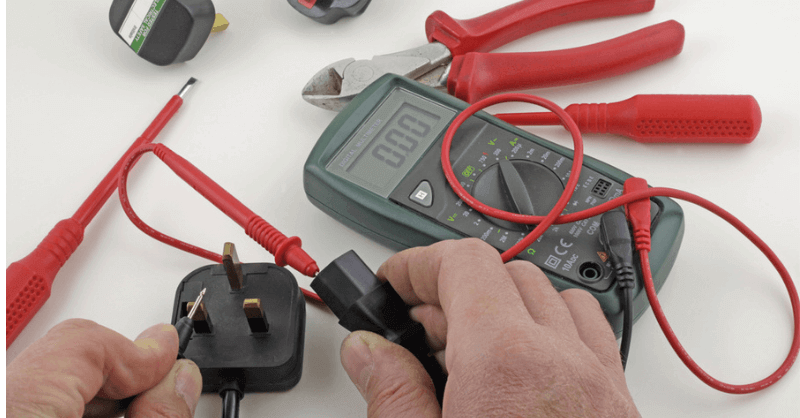
Frequency of PAT Testing
There are no absolute rules regarding the frequency of P.A.T Testing an item of electrical equipment should be inspected. HSE Guidance Notes which advised regular testing were generally interpreted as a requirement for annual testing however, circumstances and conditions of use will vary. The test persons should be able to advise on the frequency of testing from their own experience and discussions with the user or duty holder regarding the lifestyle of the equipment. The repairer of equipment should test after repair. A hirer should test each piece of equipment before each hire contract. All personnel responsible for the safe use of electrical equipment (e.g. contractors, managers of electrical/electronic laboratories, office managers, are each regarded by the EAWR as duty holders and should operate a routine safety testing programme..
for equipment within their control and the periodicity of the tests should be based on the principles of risk assessment.
The HSE offer useful guidance in IND (G) 160L Maintaining portable electrical equipment in offices and other low risk environments. The HSE advises: Experience of operating the maintenance system over a period, together with information on faults found, should be used to review whether and how often equipment and associated leads and plugs should receive a combined inspection and test. The above advice offers only a starting point and should be modified by local judgements where necessary-i.e.Risk Assessment is required. The following table shows the recommended times between tests, as laid out in the IEE guidance notes of PAT testing.
The IEE Suggested Initial Frequency of Inspection & Testing of Class 1 Equipment.
|
TYPE OF PREMISES |
TYPE OF EQUIPMENT |
FORMAL VISUAL INSPECTION |
COMBINED INSPECTION & TESTING |
|---|---|---|---|
| Stationary equipment |
24 months
|
48 months
|
|
| IT equipment |
24 months
|
48 months
|
|
Office & Shops |
Movable equipment |
12 months
|
24 months
|
| Portable equipment |
12 months
|
24 months
|
|
| Hand-held equipment |
6 months
|
12 months
|
|
| Stationary equipment |
24 months
|
48 months
|
|
| IT equipment |
24 months
|
48 months
|
|
Hotels |
Movable equipment |
12 months
|
24 months
|
| Portable equipment |
12 months
|
24 months
|
|
| Hand-held equipment |
6 months
|
12 months
|
|
| Stationary equipment |
Monthly
|
12 months
|
|
| IT equipment |
Monthly
|
12 months
|
|
Equipment used by the the public |
Movable equipment |
Weekly
|
6 months
|
| Portable equipment |
Weekly
|
6 months
|
|
| Hand-held equipment |
Weekly
|
6 months
|
|
| Stationary equipment |
None
|
12 months
|
|
| IT equipment |
None
|
12 months
|
|
Industrial including commercial kitchens |
Movable equipment |
Monthly
|
6 months
|
| Portable equipment |
Monthly
|
6 months
|
|
| Hand-held equipment |
Monthly
|
6 months
|
|
| Stationary equipment |
None
|
12 months
|
|
| IT equipment |
None
|
12 months
|
|
Schools |
Movable Equipment |
4 months
|
12 months
|
| Portable equipment |
4 months
|
12 months
|
|
| Hand-held equipment |
4 months
|
12 months
|
|
| Stationary equipment |
Monthly
|
3 months
|
|
| IT equipment |
Monthly
|
3 months
|
|
| Construction sites 110v equipment |
Movable equipment |
Monthly
|
3 months
|
| Portable equipment |
Monthly
|
3 months
|
|
| Hand-held equipment |
Monthly
|
3 months
|
Assessing the frequency of testing
The Health and Safety Executive offers no absolute rules on the frequency of the testing and inspection of portable appliances. The Memorandum of Guidance on the Electricity at Work Regulations suggests that ‘regular inspection of equipment is an essential part of any preventative maintenance program, but no attempt is made to specify the intervals of time implied by the word ‘regular’. The reason for this omission is obvious; different situations require different measures in order to meet the requirement that the danger is prevented. The factors which effect the frequency of testing must be assessed by the duty holder who thereby makes the judgement. In arriving at a judgement as to the frequency of testing, a dutyholder is likely to assess the following factors:
- The environment-equipment installed in a benign environment will suffer less damage than equipment in an arduous environment
- Users-if the users report damage as and when it becomes evident, hazards will be avoided. Conversely, if equipment is likely to receive unreported abuse more frequent inspection and testing is required
- The equipment construction-the safety of a class 1 appliance is dependant upon a connection with earth of the electrical installation, If the flexible cable is damaged the connection with earth can be lost. Safety of class 2 equipment is not dependent upon the fixed electrical installation
- The equipment type-appliances which are hand held are more likely to be damaged than fixed appliances. If they are class 1 the risk of danger is increased as the safety is dependant upon the continuity of the protective conductor from the plug to the appliance.
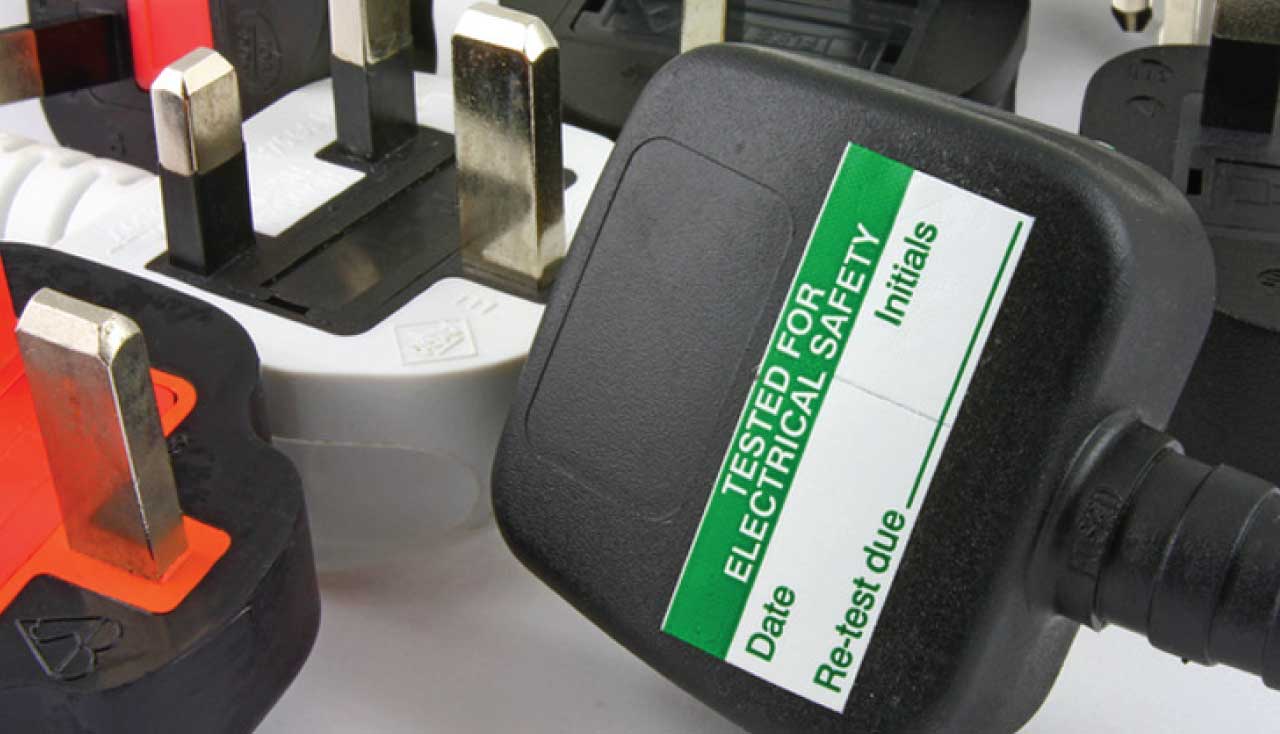
Procedure of Portable Appliance Testing
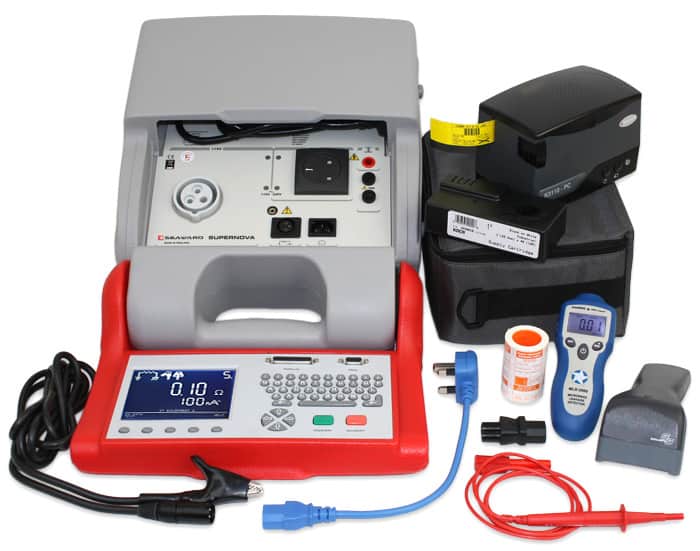
All testing is carried out under the IEE’s Code of Practice for In-Service Inspection and Testing of Electrical Equipment and conforms to HSE guidelines.
Before any PAT Testing commences on an appliance, our engineer will assess the close environment to make sure testing can be carried out safely and with no risk to either themselves or people working in the environment.
Inspection and Testing is carried out in several stages:
- Preliminary Visual Inspection
Visually checking the appliance for electrical safety or damage to the plug, fuse, wiring, cable and protective case of the appliance. Our engineer will ask themselves questions such as:
The Flex-is it in good condition? Is it free from cuts, fraying and damage? Is it in a location where it could be damaged, is it too long, too short or in any other way unsatisfactory? Does it have inadequate joints?
The Plug-is the flexible cable secure in it’s anchorage? Is it free from any sign of over heating? Is it free from cracks or damage?
The Flex Outlet-is there any sign of overheating? Is it free from cracks and other damage?
The Appliance-does it work? Does it switch on and off properly? Is it free from cracks, contamination damage to the case, or damage which could result in access to live electrical wiring or parts? Can it be used safely?
The Users-are they satisfied that the equipment works properly? The environment-is the equipment suitable for its environment? Suitability for the job-is the equipment suitable for the work it is required to carry out?
- Earth Bond Testing
The safety of certain appliances depends upon a connection with the earth for its safety.
A test is carried out using electrical PAT Test equipment to ensure a safe earth is present in the appliance.
The test is to ensure that the connection between the earth pin in the mains plug of the appliance and the metal casing of the appliance is satisfactory and of sufficiently low resistance.
- Insulation Testing
A test is carried out using electrical test equipment to ensure the insulation resistance in the appliance is at a safe level. This test is used to verify that adequate insulation exists between the mains supply pins and the earth.
- Substitute Leakage Test
The Sub Leakage Test applies a nominal voltage of 40V AC RMS to the appliance and is applied between the earth pin and both the live and neutral pins of the supply plug.
This test can prove useful in situations where neither conventional insulation nor flash tests are acceptable methods of testing the insulation of the appliance.
- Flash Testing
This test is rarely carried out and only then on certain appliances such as power tools.
A test is carried out to measure the insulation of an appliance if a very high test voltage is applied to it.
This test is used to determine that the insulation is of sufficient strength to prevent breakdown, particularly where high transient voltages are likely.
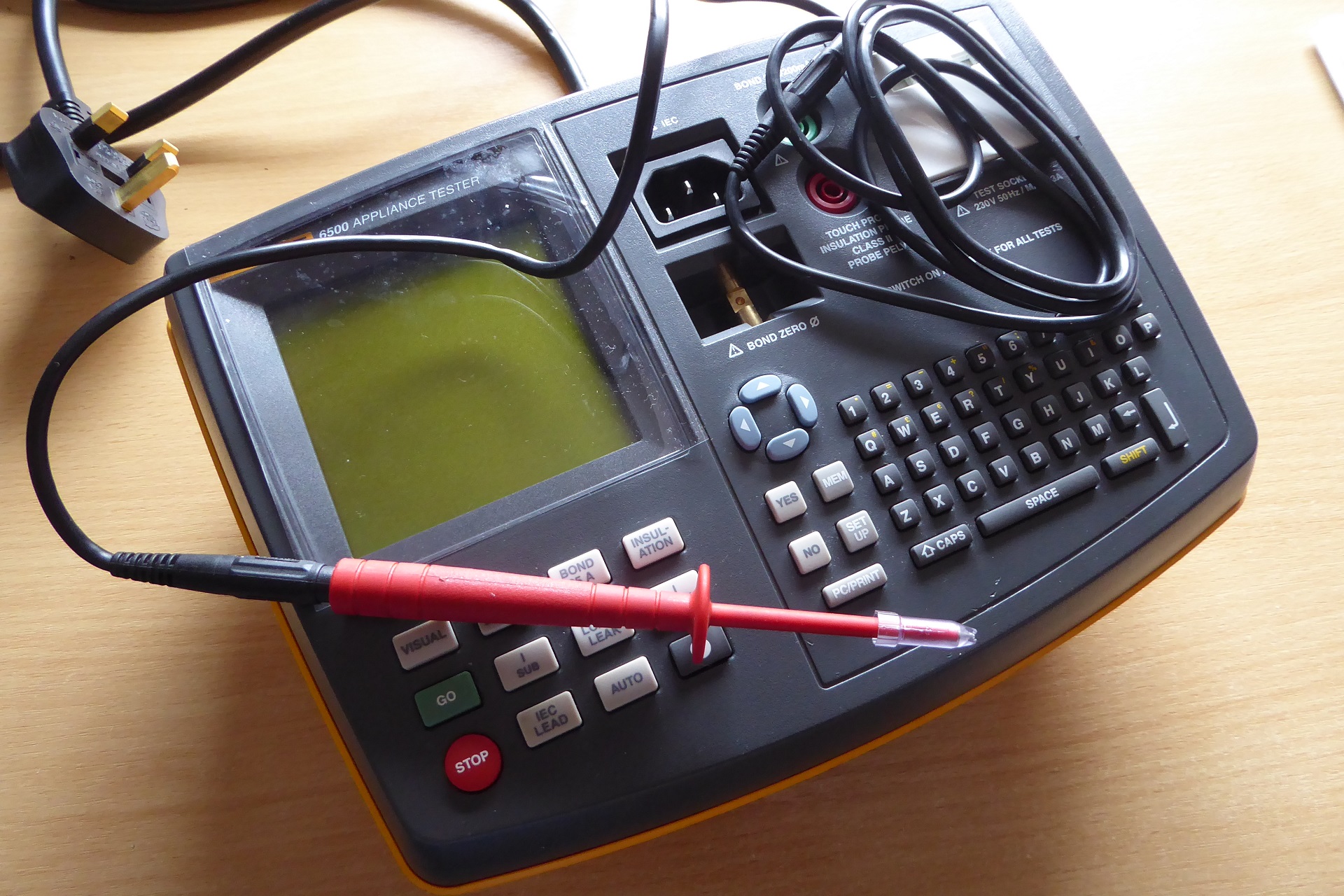

- Earth Leakage Measurement
A test is carried out to monitor the current flow through the earth lead of the appliance.
The leakage test shows the current being lost through leakage as the difference in the currents flowing in the live and neutral conductors. This difference is the total leakage away from the appliance.
This test is of particular value when an appliance incorporates a number of sequences, which may change the electrical characteristics of the appliance during its operation.
- Load Test
A test is carried out applying a voltage through a current limiting resistor to the mains supply plug and checks that the current flow will not be excessive when full voltage is applied to the appliance.
- Touch Leakage Test
The touch leakage test displays the current that would flow if a person touched the appliance. The electrical PAT test equipment detects any current flowing in the earth bond lead and indicates the potential leakage through a metal panel.
- Functional Check
A test is carried out to ensure that the electrical appliance is working correctly and basically does what it is supposed to do in the right environment.
|
Fuse Replacement
|
FREE
|
|
Re-wire Existing plug
|
FREE
|
| Replacement plug |
FREE
|
| Re-test following repair |
FREE
|
Portable Appliance Testing Prices
We believe in a clear pricing structure for our PAT Testing so that the price you see will be the price that you will pay. All charges are based on the total number of items to be electrical tested.
Q) Are there any hidden charges-
No! All our prices include PAT Testing reports, labelling, certificates, out of hours & weekend service, test equipment register, travel , etc.
We can provide you with a comprehensive appliance management system that includes:
Testing carried out by a qualified technician
Minor repairs such as fuses and clamping sheathing into plugs at no extra cost.
Providing all clients with a complete log of all appliances and location to assist companies with their fixed asset management.
Causing minimal disruption with all testing carried out where the appliance is located.
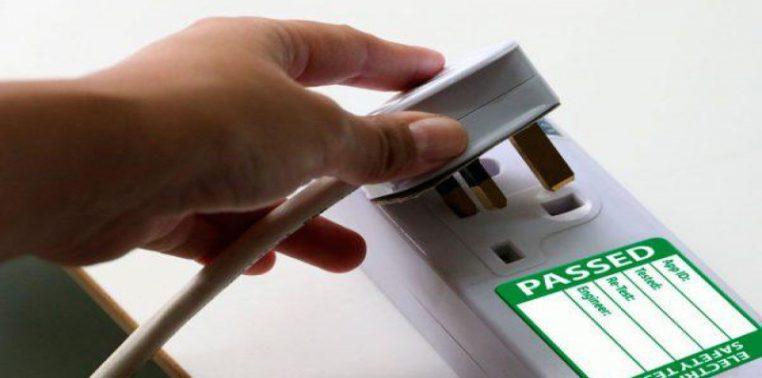
|
Number of items to be PAT tested
|
Price per item
|
|
1-1000
|
£5.00
|
When working out the number of appliances to be tested, one item is an appliance with an associated lead, whether fixed or detachable i.e. A computer monitor and its associated IEC (Kettle) lead will be charged as ONE item.

-
- Google Reviews
- .0
- Based on reviews
- powered by


